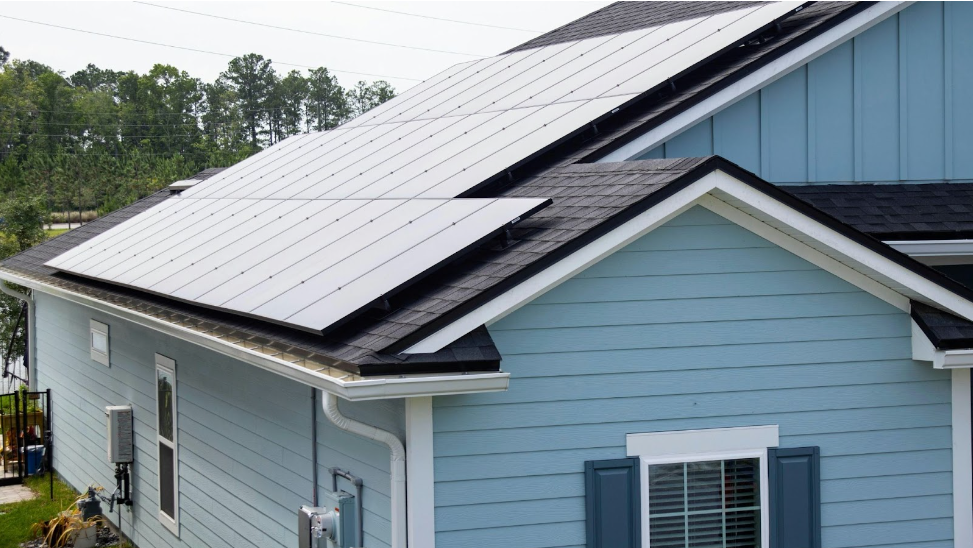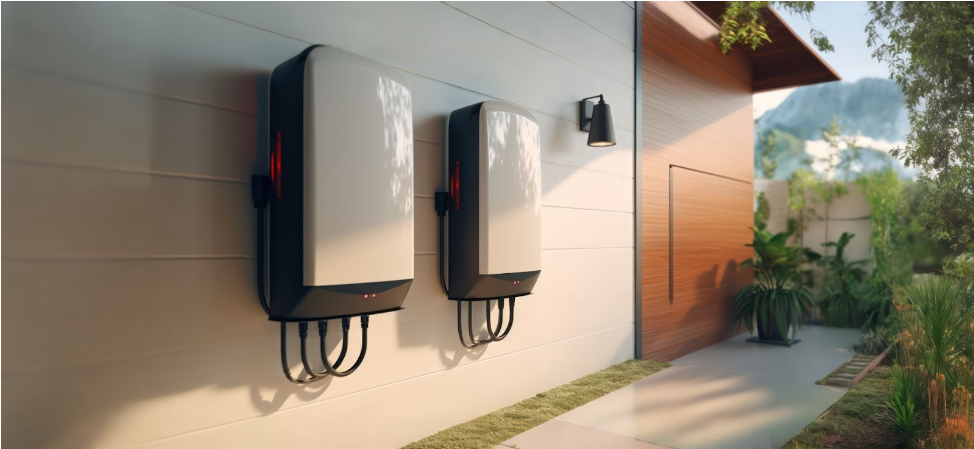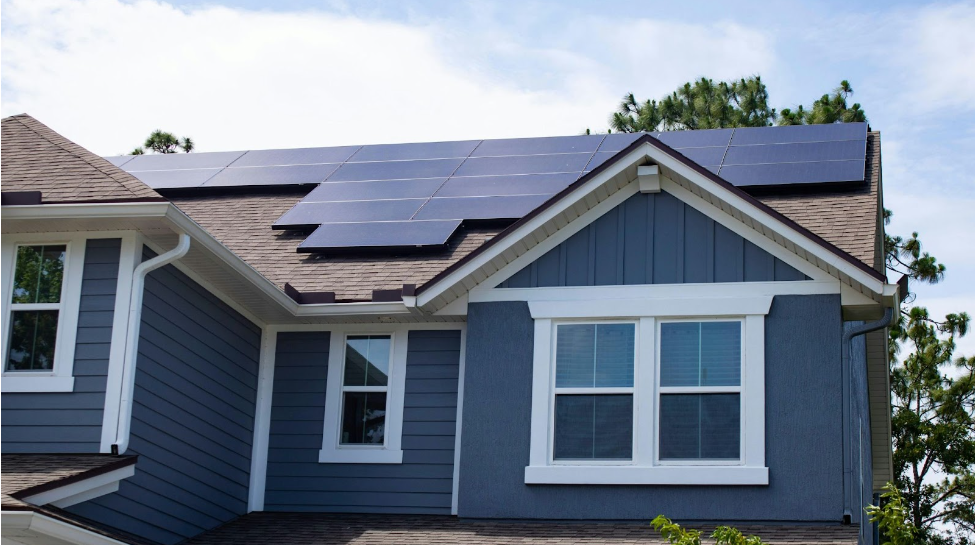The top ten ways to save money and lower monthly utility bills
Californians pay a lot for electricity. Electricity not only powers our homes and businesses, but how we live life. People use electricity to read at night, watch the big game or cool down our home. Some even charge their cars with electricity.
California ranked third highest in the country for average residential electricity prices, according to 2023 data from Statista. The average California household uses less energy than the average American, due to the Golden State’s mild climate — but high electricity costs.
The Golden State uses less electricity per capita than any other state, besides Hawai’i. There are many ways to lower your electric bills, but only a solar energy system can offset costs while powering your lifestyle.
Here are some ways you can save money each month. It’s important to remember that many of these options can help you save money and energy, contributing toward a sustainable lifestyle.
Summary
- Californians pay some of the highest prices for electricity, despite using less per capita
- There are multiple ways to lower your utility bills, but going solar is the best option to power your home while cutting costs
- Enact designs custom home solar energy systems for Californians, tailored to your energy needs
Electric Prices Keep Rising in California and What It Means for Homeowners
We’ve already established Californians pay high costs for electricity, despite using less energy per capita than most states. The unfortunate reality is that these prices are likely to increase. According to Pacific Gas and Electric Company, rates have increased by 12.8% since January, leaving many homeowners struggling to keep up with their monthly bills.
Starting on Jan. 1, utility rates have increased for over 16 million PG&E customers. The increase is costing average households $32-$34.50 extra per month. In other terms, this increase amounts to around $400 extra per year. PG&E services much of Northern and Central California.
10 ways to lower the cost of electricity in California
1. Install Solar Panels: A Long-term Solution for Lowering Utility Bills
Going solar is the best way to lower your electric bills. As utility bills get more expensive, the most affordable way to power your home is by generating your own.
A home solar panel system can significantly lower utility bills by harnessing sunlight to generate electricity. Photovoltaic panels convert sunlight into usable electrical energy, reducing dependence on traditional grid power.
By generating clean, renewable energy from your rooftop, you can reduce your reliance on utility-provided electricity. This mitigates the impact of rising electricity prices.
Over the long run, the system pays for itself through energy savings, providing a cost-effective and sustainable solution. Overall, a home solar panel system empowers homeowners to control their energy expenses, contribute to environmental sustainability and potentially achieve energy independence.

2. Maximize Savings with a Solar Battery Storage System
A home storage battery can integrate with a solar energy system and lower your utility bills. Storage batteries optimize energy usage and reduce reliance on the grid during peak-rate periods.
After NEM 3.0, the benefits of sending excess solar energy to the grid have shrunk by 75% — incentivizing batteries for additional savings. A storage battery allows you to use more of your low-cost, solar energy and less power from the grid.
For most Californians, the highest rates for electricity are incurred during the afternoon and evening — when there’s a high demand for power. Time-of-Use (TOU) billing is common in the Golden State, with higher electricity rates during peak demand hours.
A home battery allows residents to store excess solar energy generated during low-demand periods, typically when the sun is shining and discharge it when rates are higher. This helps avoid drawing electricity from the grid during expensive peak hours, leading to substantial cost savings.
Additionally, homeowners can take advantage of various incentive programs in California, such as the Self-Generation Incentive Program (SGIP), which offers rebates for installing energy storage systems. Overall, integrating a home storage battery not only enhances energy resilience but also strategically manages electricity consumption, contributing to lower utility bills and increased energy efficiency.

3. How an Energy Audit Can Uncover Hidden Savings in Your Home
An energy audit is like a checkup for your house’s energy use. A professional looks at different things in your home, such as how well it’s insulated, the heating and cooling systems, lights and appliances. They do this to find areas where your home might be using too much energy or not using it efficiently.
The cool thing about an energy audit is that it helps homeowners save money on their energy bills. The auditor gives suggestions on how to make the home use energy better. This might include things like fixing drafts, adding better insulation, getting energy-efficient appliances or using a programmable thermostat. By following these suggestions, homeowners can use less energy and that means paying less on their energy bills.
Sometimes, the audit also suggests using renewable energy, like solar panels, to make the home even more energy-efficient. Many times, there are rewards or discounts from the energy company for making these improvements. So, an energy audit is like a guide that helps homeowners make smart choices to use less energy and save money on their utility bills.
4. Switch to LED Lights and Dimmers for Big Savings
LED lights and dimmable lights are energy-efficient choices that can help lower utility bills. LED lights use less electricity than traditional incandescent bulbs, making them more cost-effective in the long run. They also last much longer, reducing the frequency of replacements and maintenance costs.
Dimmable lights provide flexibility in controlling the amount of light emitted. By adjusting the brightness to match the specific lighting needs, you can further decrease energy consumption. For example, during the day or when full brightness isn’t necessary, dimming the lights reduces energy usage. This adaptability allows you to customize lighting based on different activities and moods, contributing to overall energy savings.
5) Purchase Energy-Efficient Appliances to Save on Utility Costs
Energy-efficient appliances play a crucial role in lowering utility bills by using less electricity to perform the same tasks as their less efficient counterparts. These appliances are designed to maximize performance while minimizing energy consumption, translating to cost savings for homeowners. For example, energy-efficient refrigerators, washing machines and dishwashers use advanced technologies and improved insulation to operate more efficiently.
When you replace older, less efficient appliances with energy-efficient ones, you reduce your overall electricity usage. This results in lower energy bills since the appliances consume less power to deliver the same or even better performance. Many energy-efficient appliances also come with the Energy Star label, indicating that they meet strict energy efficiency guidelines set by the Environmental Protection Agency (EPA).
Investing in energy-efficient appliances not only benefits your wallet but also contributes to environmental conservation by reducing greenhouse gas emissions associated with energy production. Additionally, some utility companies provide incentives, rebates or discounts for choosing energy-efficient appliances, making the transition more financially attractive. Overall, opting for energy-efficient appliances is a smart choice that combines cost savings, environmental responsibility and improved home efficiency.
6. Lower Water Heater Temperature to Save on Utility Costs
Lowering water temperatures in your home can help reduce your electric bill. The water heater is a significant consumer of energy in households and heating water accounts for a notable portion of electricity expenses. By lowering the water temperature setting on your heater, you decrease the energy required to heat the water, leading to cost savings.
Most households have water heaters set at temperatures higher than necessary. Lowering the temperature not only conserves energy but also reduces the risk of scalding. It’s recommended to set the water heater thermostat to around 120°F (49°C) for a balance between safety and efficiency.
Using energy-efficient appliances and fixtures, such as low-flow showerheads and efficient washing machines, in conjunction with lower water temperatures can amplify your overall energy savings. This adjustment is a simple and effective way to contribute to a more energy-efficient home and lower your electric bill without sacrificing comfort. It’s a smart and practical step towards reducing energy consumption and promoting financial savings.
7. Wash Clothes and Dishes at Night to Cut Energy Costs
Washing dishes and laundry at night can be more energy-efficient. Especially in California, with time-of-use pricing. During nighttime hours, electricity demand is often lower, leading to potentially lower electricity rates. This means that running appliances during off-peak hours may cost less, contributing to energy savings.
Additionally, some homes have smart meters or programmable energy plans that offer reduced rates during specific hours, making nighttime an economically advantageous time to run dishwashers and washing machines.
However, the actual energy efficiency also depends on the source of electricity in your area. If your electricity comes from renewable sources that run continuously, the time of day might have less impact.
Running appliances at night could potentially reduce strain on the electrical grid during peak daytime hours, promoting overall grid efficiency. It’s advisable to check with your utility provider for specific information on time-of-use rates and whether your location benefits from lower nighttime electricity costs.
Overall, washing dishes and laundry at night has the potential to be more energy-efficient and cost-effective, aligning with efforts to optimize electricity usage and contribute to a more sustainable energy consumption pattern.
8. Seal Up Your Home with Weatherstripping to Cut Energy Waste
Weatherstripping doors and windows serves as a kind of insulation for your home, similar to putting on a cozy sweater. It acts as a barrier against unwanted drafts by sealing gaps and preventing the exchange of indoor and outdoor air.
When doors and windows have small openings, they allow outside air to infiltrate, forcing your heating or cooling systems to compensate. Sometimes bugs and insects can enter through these small openings.
By installing weatherstrips, you create a tight seal and improve your home’s energy efficiency. This minimizes the workload on your heating or cooling systems, resulting in reduced energy consumption and lower utility bills.
Essentially, it’s a cost-effective method to maintain a comfortable indoor environment while curbing energy waste. Upgrading your home with weatherstrips offers a simple yet impactful measure to enhance insulation, optimize energy usage and ultimately save money on utility expenses.
9. Eliminate Phantom Energy Use with Smart Power Strips
Using smart power strips can help lower your utility bill by preventing “phantom” or standby power consumption. Many devices continue to draw power even when turned off, contributing to energy waste and higher bills. Smart power strips detect when devices are not in use and automatically cut off power to them, eliminating this standby energy consumption.
By connecting multiple electronic devices like computers, TVs and chargers to a single smart power strip, you ensure that all devices are completely powered down when not in use. This not only reduces electricity waste but also simplifies energy management.
Additionally, some smart power strips offer features like timers or remote control, allowing you to customize and optimize your energy usage further. Making this simple switch helps conserve energy, lowers your utility costs and is an easy step toward a more energy-efficient home.
10. Install a Smart Thermostat for Optimized Heating and Cooling
Installing a smart thermostat can lower your utility bill by intelligently managing your home’s heating and cooling. Smart thermostats learn your preferences and adjust the temperature based on your habits, ensuring that energy is not wasted when you’re away or asleep. They also provide remote control through a smartphone, allowing you to adjust settings even when you’re not at home.
Additionally, smart thermostats often come with energy-saving features like scheduling and learning algorithms. They can optimize heating and cooling cycles, avoiding unnecessary usage and reducing overall energy consumption. By efficiently regulating your home’s temperature, a smart thermostat ensures that you only use as much energy as needed, leading to cost savings on your utility bill. It’s a convenient and effective way to make your home more energy-efficient without compromising comfort.

How do I lower my utility bills in California?
There are many ways to lower utility bills in California. Residential solar offers homeowners the most significant path to reducing utility bills. Rooftop panels convert abundant sunlight into electricity.
Energy generated from your system offsets energy pulled in from the grid, which reduces your utility bills every month. These savings can seriously stack up over your system’s decades-long lifespan.
Solar energy systems create clean energy that doesn’t pollute our environment. Think of how much sunshine shines on your rooftop, that sunshine can be converted into electricity.
Unlike other switches to sustainability, solar energy doesn’t require heavy sacrifices or lifestyle changes. It might still be beneficial for you and the planet to consider making other sustainable decisions.
Frequently Asked Questions
Why is my electric bill so high in California?
California’s high electricity costs are due to factors like high demand, aging infrastructure, and the transition to renewable energy.
How much is the average electric bill in California?
As of 2023, the average electric bill in California is around $200 per month, depending on usage and location.
What runs your electric bill up the most?
Heating, cooling, and water heating are typically the largest contributors to high electricity bills.
What wastes the most electricity in a house?
Appliances left on standby, such as TVs and chargers, waste significant electricity when not in use.
Get a custom solar quote with Enact
Start your solar energy journey with Enact and discover the perfect home solar system tailored to your needs. If you’re eager to power your home with clean energy while minimizing monthly costs, finding the right solar solution is key.
Enact specializes in crafting customized solar systems that align with your energy consumption, budget, and sustainability objectives. Take the first step by scheduling a free consultation with our amiable team of Energy Advisors.
During this session, you’ll gain valuable insights into how Enact can seamlessly guide and enhance your solar journey. Let us help you unlock the benefits of solar energy for your home—efficient, cost-effective, and environmentally friendly. Start the conversation with Enact today and embrace a brighter, more sustainable future.

